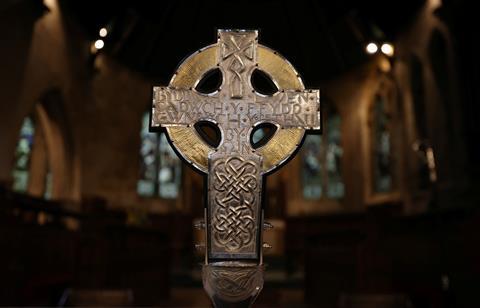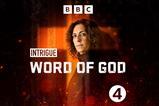A new Cross of Wales incorporates a relic of the True Cross, a personal gift of Pope Francis to the King to mark the upcoming coronation. The relic is made up of two small wooden shards said to be taken from the cross on which Jesus was crucified. But is there any evidence to suggest these fragments are genuine? Chris Sinkinson investigates

The Independent described it as the gift for “the man who has everything.”
The King has been gifted fragments of the True Cross - but what does the archaeology say? Are they authentic?
These fragments are tiny, neither more than a centimetre in length, and part of a long history of the veneration and spread of what are called relics.
What would an archaeologist make of these splinters of wood?
In matters like this, archaeologists are concerned with “provenance.” This refers to an artefact’s place of origin. There are many objects on the black market or even in museums that might be genuine, but the lack of clear provenance clouds the matter.
The claim to have discovered the cross of Jesus first emerged around 350 AD. It came in the wake of Helena, the mother of Emperor Constantine, excavating a possible site of the tomb of Jesus and ordering that a church be built at the spot. We now know this as the Church of the Holy Sepulchre in Jerusalem. It was said that three crosses were found at the location, one bearing the notice that indicated it had been the one on which Jesus had died. The cross was taken to Rome and, gradually, pieces were broken from it and distributed far and wide across the Holy Roman Empire. At least, that’s the story. What do we really know?
Helena did have a church built at a possible location of the death and burial of Jesus. But our earliest record of this event, from Eusebius (who died in 339 AD) makes no mention of the cross being found. It is several decades later that stories emerge about the finding of the cross. The veneration fragments led to a lucrative trade in forgeries during the Middle Ages. A few years ago, Oxford University carbon dated one of these fragments to c.1100 AD.
John Calvin famously observed that if all the pieces of the true cross were reassembled there would be enough to fill a ship
Of course, this does not mean that the two shards received by Charles are fake. However, the history of relics and their obscure origins inspires little confidence. By the Middle Ages, the world was awash with relics. Today, across Europe, you are able to visit churches that claim to have the nails from the cross, the crown of thorns, the burial shroud, a vial of the blood of Christ, Judas’ pieces of silver along with numerous bones and body parts of various apostles and saints. Crusaders returning from Jerusalem brought back two heads of John the Baptist and at one time a church in Paris had three crowns of thorns. According to the Anglo-Saxon Chronicle King Alfred received a fragment of the cross from Pope Marinus in 883 AD.
The Protestant Reformation led to a rejection of the veneration of relics. John Calvin famously observed that if all the pieces of the true cross were reassembled there would be enough to fill a ship and Erasmus, a Catholic scholar, suggested there would be enough to construct a house.
So it is highly unlikely the true fragments of the cross will play a part in the coronation procession of Charles. But we can be encouraged that there remains a central place for the Christian faith in such a public event and even an interest in Christian origins and history. But we should also be wary of confusing religious traditions with the true ground of faith in the authentic eyewitness material of the gospels.
Archaeology can provide robust evidence to take the biblical accounts as historically reliable. But the realm of relics generally moves beyond the world of archaeology and science and into a realm of superstition and speculation.





































No comments yet